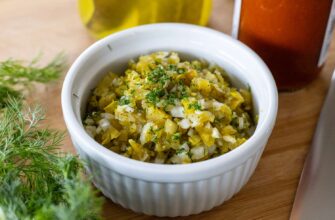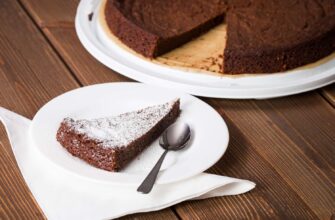Close


Photo:
Allrecipes / Alison Miksch
Have you ever been in the process of making a delicious homemade soup, but you can’t quite figure out what special oomph of flavor seems to be missing? We’ve all been there, and traditionally, we’re always told to taste and season our food–including soup–as we cook. While I’d almost always agree with this excellent advice, almost isn’t always, and sometimes it’s necessary to break the rules.
With that in mind, is there an ingredient that would set homemade soups up for flavor success without tasting as you go? It turns out there is, and it’s not what you’re expecting. It’s not a spice. It’s not a paste. It’s not even salt or pepper. It’s butter.
Yes, butter. Adding that thing you always have in your refrigerator is not only going to enhance the flavor, it’s also going to help the texture as well. This is the luscious, chef’s kiss finishing touch you’ve been searching for.
How Does Butter Make Soup Better?
One of butter’s many beauties is its ability to enhance flavor. If you ask a chef how they build flavor in restaurant dishes, they’ll likely mention butter, garlic, and shallots. This applies to soup as well. Butter’s fat content helps extract and distribute fat-soluble flavor compounds, blending ingredients more seamlessly. The result? A richer, more balanced soup with a subtle silky, creamy texture.
Can I Use Oil Instead of Butter?
If you’re on the fence between adding butter or oil to your soup, keep in mind that oil runs the risk of creating a greasy texture, as well as a chance of separating the broth and the oil, which is unappealing both visually and to the taste buds. When the goal is to marry flavors together and intensify flavor, incorporating oil could potentially pull your soup apart. Butter is a richer, creamier, more luxurious option.
When Should I Add Butter to Soup?
The best time to add butter to soup is right before serving. When you incorporate a bit of butter as a last-minute touch, the butter won’t have time to fully break down and melt away into the mix. As a result, it maintains its richness and umami flavors, giving each spoonful an extra touch of rich flavor and creamy texture, while also bringing together all the other flavors of the soup.
Which Kind of Butter Should I Use in Soup?
The soup hero here is unsalted butter. Flavor control is key, and because you’re building flavors, unsalted butter gives you more control over the final result. With unsalted butter, you gain rich flavor and creamy texture, without running the risk of oversalting your meal at the last moment. However, if you only have salted butter on hand, that’s fine! Just keep in mind as you season your soup that it will have a final boost of saltiness as a finishing touch.
If you typically use ghee in your cooking, feel free to use it during the beginning sautéing stage, but it isn’t recommended for finishing your soup to achieve a creamy, silky mouthfeel. It’s more akin to an oil since it’s had the milk solids and water removed.
Can I Add Butter to Any Kind of Soup?
You may be wondering whether you should add butter to brothy or creamy soups. The delicious news is that butter is a wonderful addition to both, and the incorporating method is similar for both!
When adding butter to brothy soups like chicken noodle, tomato, or egg drop soup, it’s important to remember that a little goes a long way. Right before serving, stir a sliver, or about half a tablespoon, of unsalted butter into each serving. This will enhance the richness, add a touch of creaminess, and create a gorgeous glossy appearance to the soup, without overpowering the flavors.
When it comes to creamier soups like butternut squash, cream of mushroom, or corn soup, you have a little more texture to work with when incorporating this final touch. However, keep in mind that these soups often already contain butter or heavy cream, so a sliver of unsalted butter is probably still the best approach. You don’t want your taste buds to go into sensory overload because the soup has become overly rich. Start with one sliver, and work your way up from there, as desired.
Was this page helpful?
Thanks for your feedback!
Tell us why!
Other
Submit








